Crab eye spot disease on durian trees is caused by the fungus Colletotrichum zibethinum, reducing yield and fruit quality. Early identification and timely treatment are very important.
Crab spot disease is a significant challenge for many durian farmers. Protecting durian trees and maintaining product quality requires identifying the disease and applying effective preventive and treatment measures. In this article, Sataka provides a detailed guide on recognizing and managing crab spot disease to protect your durian orchard.
This disease causes severe damage during the flowering and fruiting stages, resulting in poor fruit set, misshapen fruits, and premature fruit drop. Crab spot disease is often mistaken for rust disease caused by fungi. However, careful observation reveals that crab spot disease produces circular lesions with concentric rings in gray, reddish-brown, and a yellow outer edge.
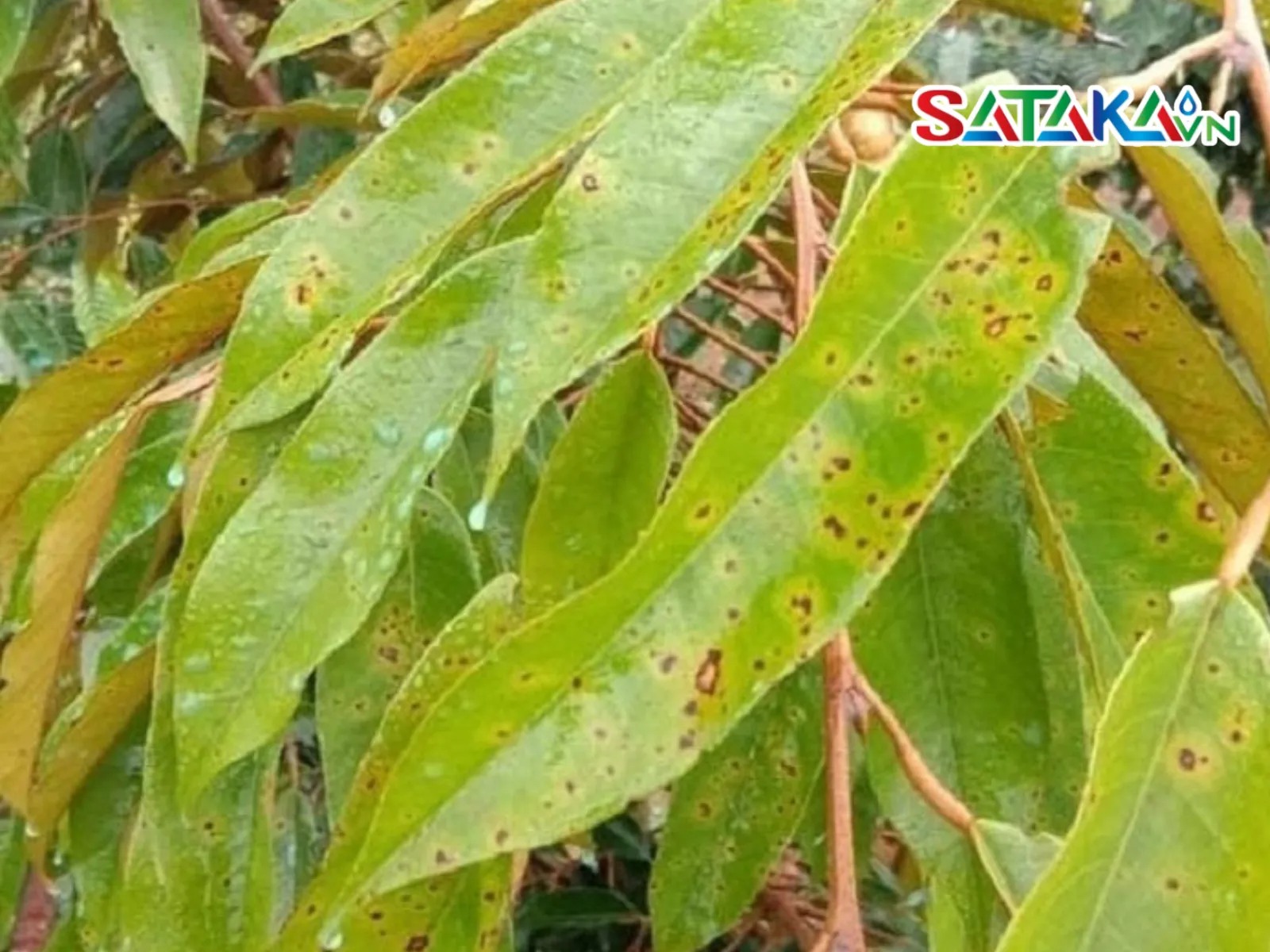
Characteristics of crab eye spot disease on durian trees
Crab spot disease is caused by the fungus Colletotrichum zibethinum, which aggressively attacks and weakens trees, resulting in significant damage to leaves, fruits, and other parts. This fungus not only reduces yield but also severely impacts the commercial quality of durian.
The fungus Colletotrichum zibethinum thrives in warm, humid conditions, with temperatures between 20–30°C and high humidity providing an ideal environment for its growth and spread. Without control measures, the disease can quickly proliferate under such conditions, causing extensive damage to durian trees.
Crab spot disease spreads through three main pathways:
Leaf miners, while not directly causing crab spot disease, are significant indirect contributors. Their attacks on young leaves create entry points for the fungus, emphasizing the need for insect control as part of disease management.
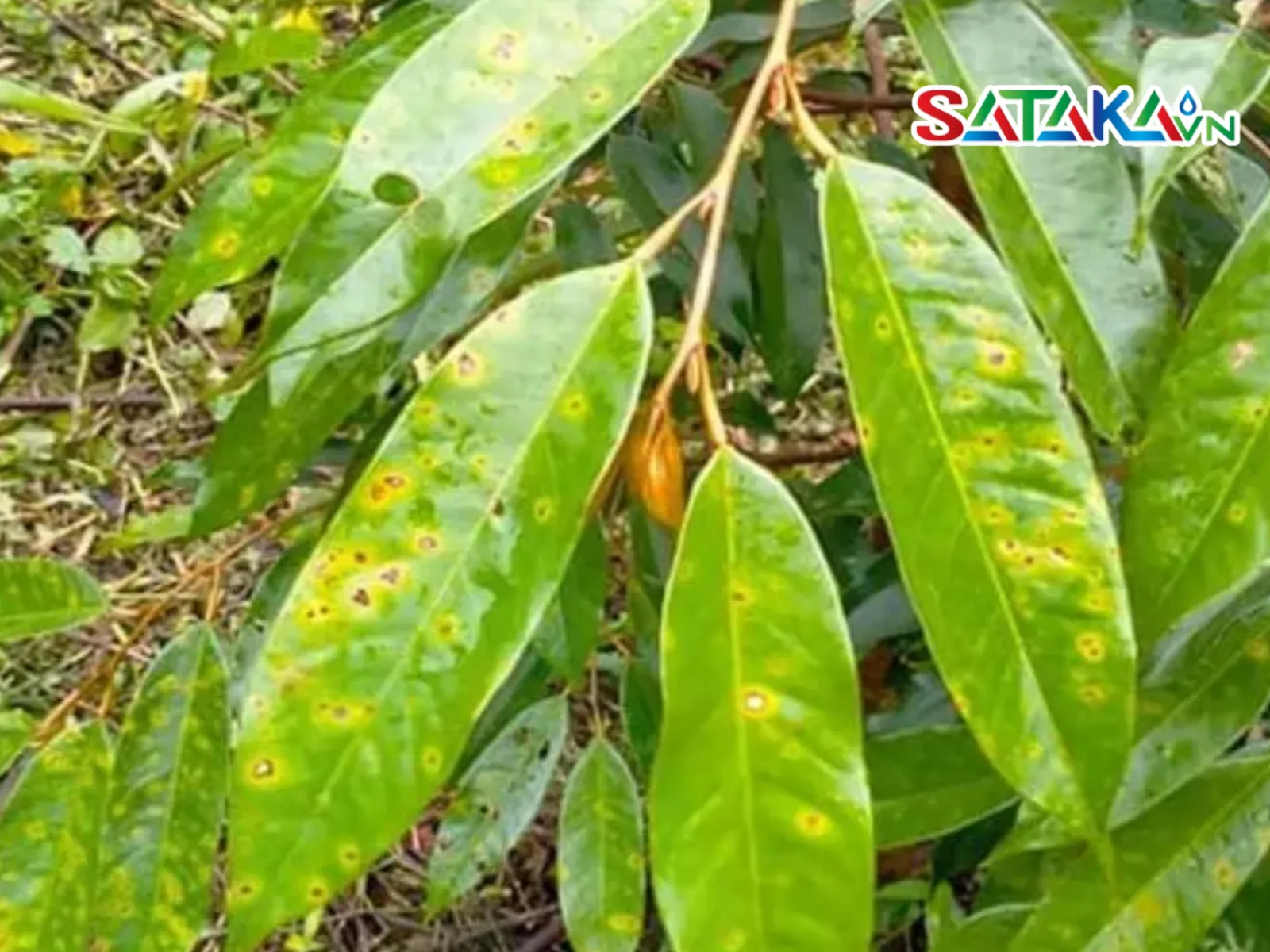
Causes of crab eye spot disease on durian trees
The disease manifests as small, bright yellow spots on young leaves, resembling pinpricks. These spots quickly turn light brown and appear on both leaf surfaces. The spots are surrounded by bright yellow halos, contrasting with the brown lesions. While the disease does not deform leaves, it reduces the tree’s resistance, affecting photosynthesis and growth.
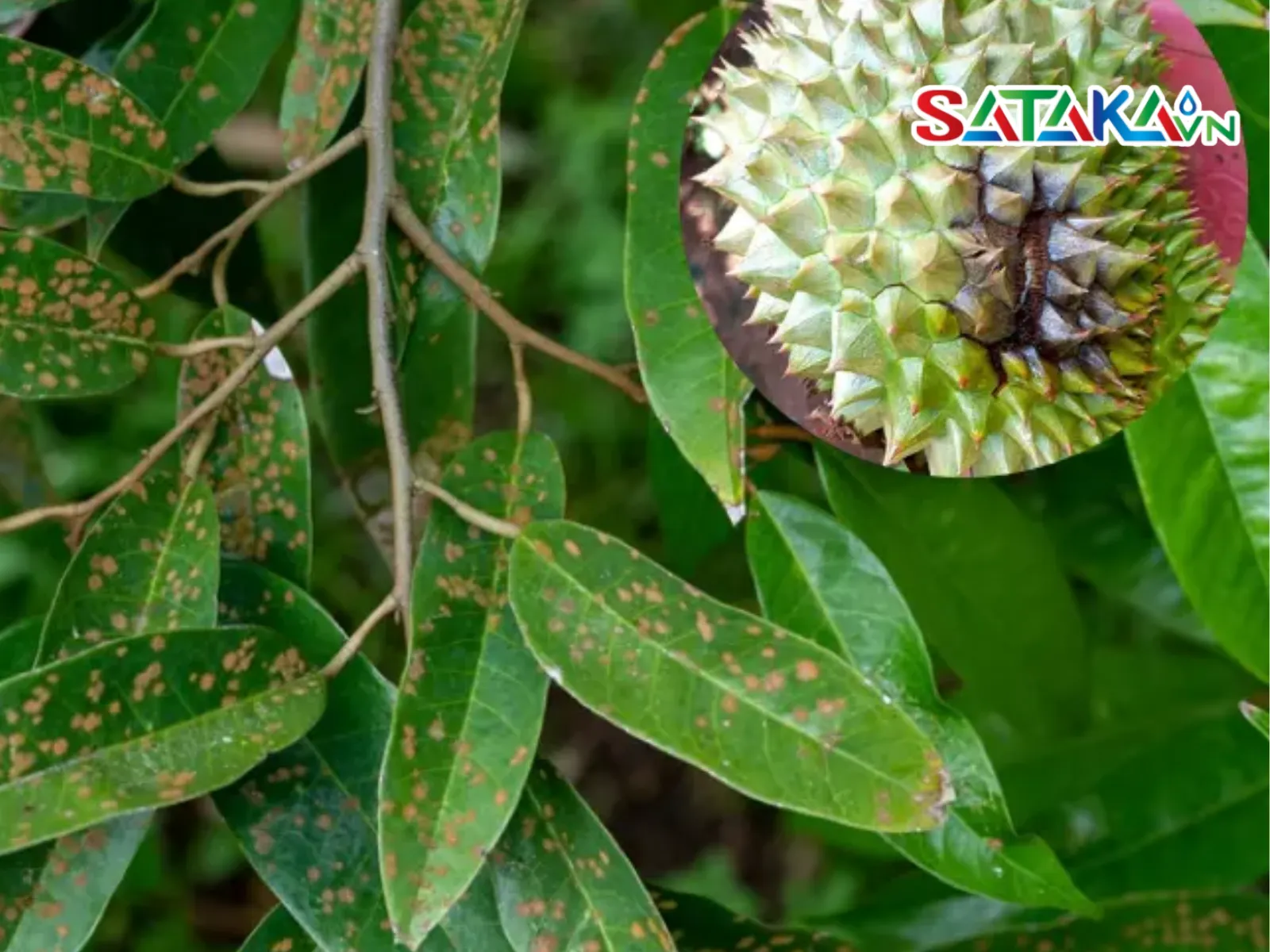
Symptoms of crab eye spot disease on durian trees
Crab spot disease affects durian fruits by forming brown lesions, often rough with raised edges. In the center of the lesions, the fruit tissue may die and crack. Severe infections cause fruits to deform, lose moisture rapidly, dry out, and drop prematurely, reducing the commercial value of the durian.
If left uncontrolled, crab spot disease can cause significant harm. The fungus Colletotrichum zibethinum affects not only leaves but also branches and fruits. Severe infections lead to stunted tree growth and reduced yields. Infected fruits lose their market value, directly impacting farmers’ profits.
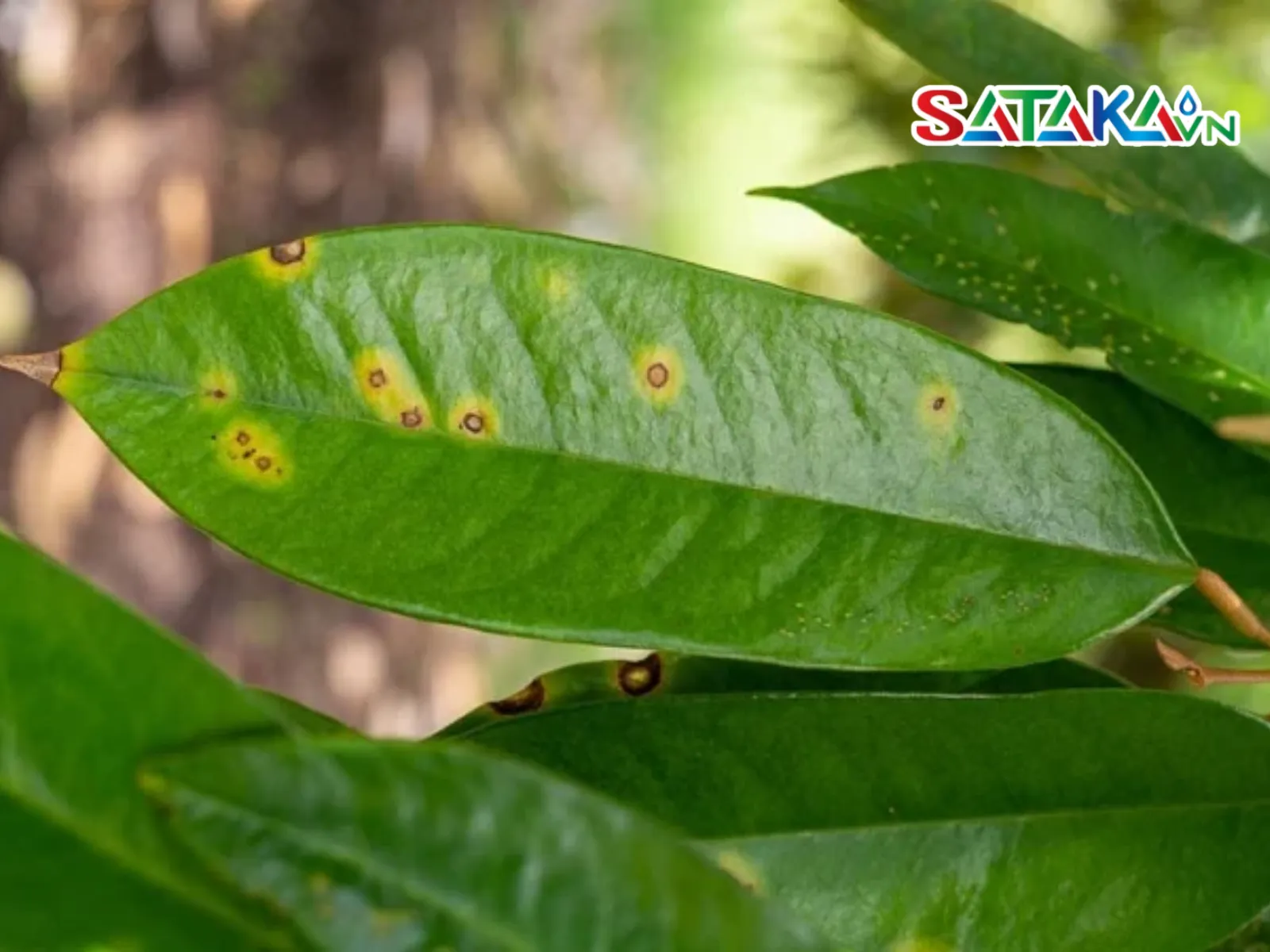
Damage of crab eye spot disease on durian trees
Use Fungicides: When the disease appears, fungicide application is necessary. Effective fungicides for crab spot disease include:
Application Instructions:
Mix 25–50ml of fungicide with 200 liters of water and spray evenly on infected areas. Repeat the spraying 2–3 times, with 3–5 days between applications, for optimal results. This regimen kills fungal pathogens, supports tree recovery, and boosts resistance to other diseases.
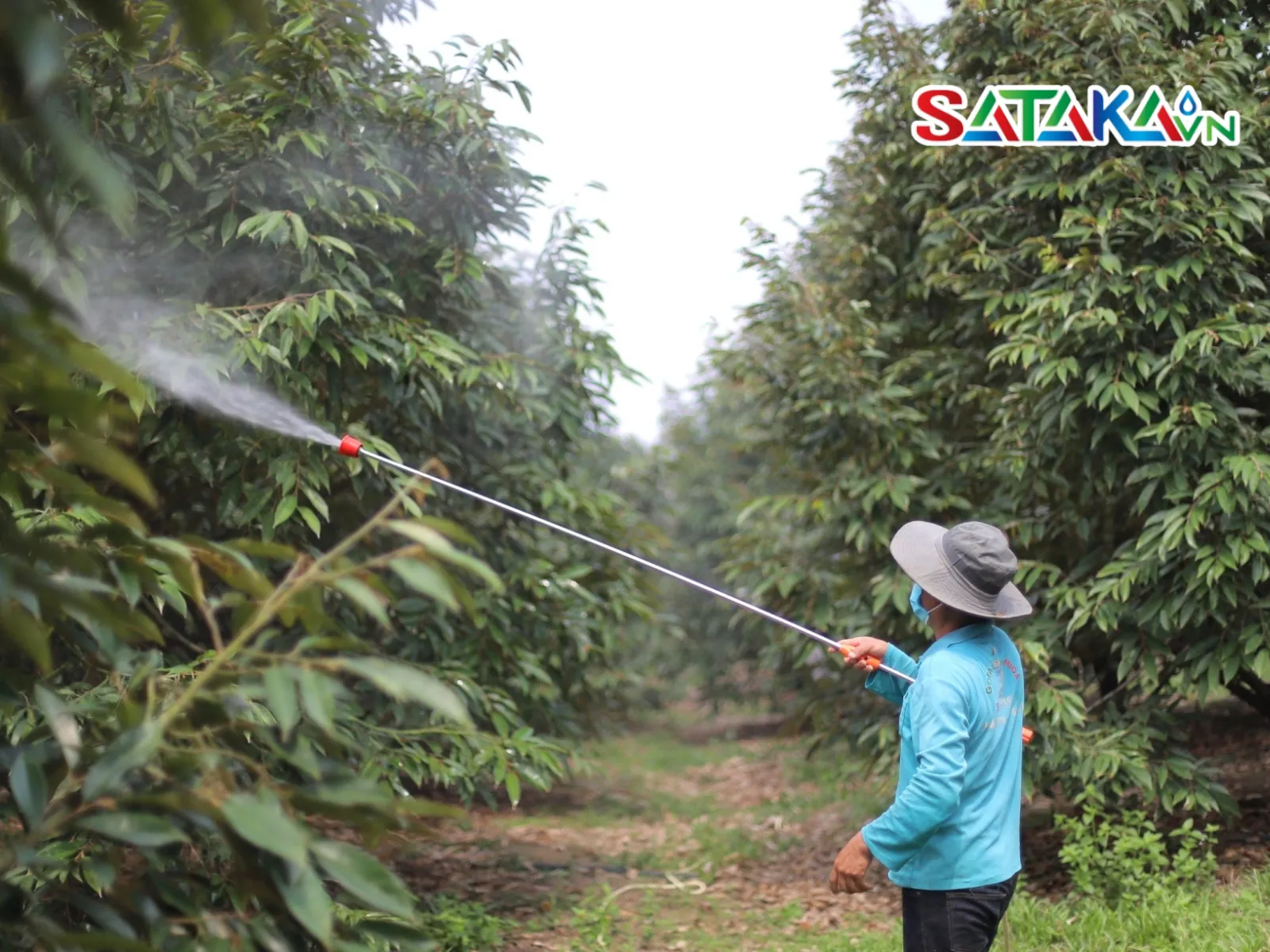
How to prevent crab eye spot disease on durian trees
Managing crab spot disease in durian requires attention and proper measures to protect tree health. Preventive and treatment strategies, including adequate nutrition, environmental management, and fungicide application, play a vital role in controlling the disease.
Sataka provides high-quality and effective fungicides to support farmers in managing crab spot disease. Contact us for advice and solutions to safeguard your durian orchard. We are here to help!